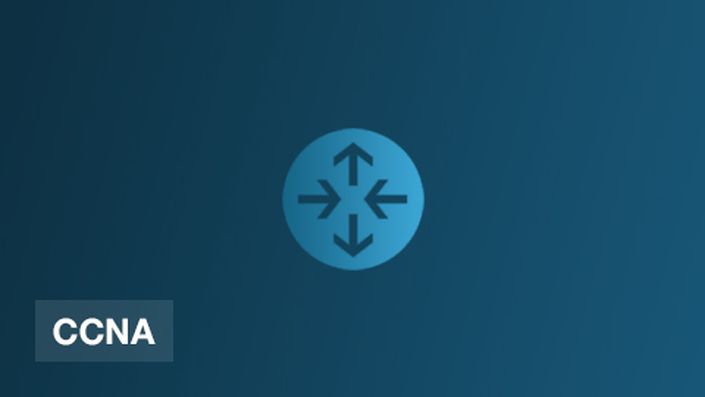
CCNA NAT configuration and troubleshooting: Cisco CCNA Exam
Prepare for the NAT exam topic in the CCNA 200-125 or 200-105 exams. You need to learn NAT for your exam! Get prepared.
The Cisco CCNA exam requires that you know how to configure and troubleshoot Network Address Translation (NAT). You need to understand both dynamic and static NAT translations. You must also to be able to troubleshoot NAT issues.
This is the exam topic Cisco have listed for the exam: "Configure, verify, and troubleshoot inside source NAT"
In this course you will review multiple NAT troubleshooting scenarios and learn how to fix NAT issues. You will also learn how to configure multiple static NAT scenarios including using a single IP address for multiple servers.
It's time to get ready for your CCNA exam!
Here is a brief overview of NAT from Wikipedia:
Network address translation (NAT) is a method of remapping one IP address space into another by modifying network address information in Internet Protocol (IP) datagram packet headers while they are in transit across a traffic routing device.
The technique was originally used for ease of rerouting traffic in IP networks without readdressing every host. In more advanced NAT implementations featuring IP masquerading, it has become a popular and essential tool in conserving global address space allocations in face of IPv4 address exhaustion by sharing one Internet-routable IP address of a NAT gateway for an entire private network.
IP masquerading is a technique that hides an entire IP address space, usually consisting of private IP addresses, behind a single IP address in another, usually public address space. The address that has to be hidden is changed into a single (public) IP address as "new" source address of the outgoing IP packet so it appears as originating not from the hidden host but from the routing device itself. Because of the popularity of this technique to conserve IPv4 address space, the term NAT has become virtually synonymous with IP masquerading.
As network address translation modifies the IP address information in packets, it has serious consequences on the quality of Internet connectivity and requires careful attention to the details of its implementation. NAT implementations vary widely in their specific behavior in various addressing cases and their effect on network traffic. The specifics of NAT behavior is not commonly documented by vendors of equipment containing implementations.
Your GNS3 Academy Instructor

David Bombal (CCIE #11023 Emeritus) passed his Cisco Certified Internetwork Expert Routing and Switching exam in January 2003. David has the highest rated and most popular course in the GNS3 Academy: SDN and OpenFlow Introduction.
David's software tools and training have been downloaded +100,000 times. Many thousands of engineers like you use his tools and training on a regular basis.
David has developed over 20 courses for HP which are used worldwide. These include multiple SDN courses and HP ASE certification courses (4 day Instructor led training).
David's YouTube videos have been viewed +1 million times.
David has been training Cisco and networking courses for 15+ years and has delivered instructor led courses in various countries around the world covering a wide range of Cisco topics from CCNA to CCIE.
He has also personally developed Cisco engineer utilities such as the VPN Config Generator, software, training materials, EBooks, videos and other products which are used throughout the world.
YouTube: https://www.youtube.com/user/ConfigTerm/
Twitter: https://twitter.com/davidbombal
LinkedIn:
linkedin.com/in/davidbombal
GNS3 Academy Curriculum
-
StartAnswering your questions (1:53)
-
StartCCNA #032 Static NAT Configuration - Multiple Servers Part 1 (10:48)
-
StartCCNA #033 Static NAT Configuration - Multiple Servers Part 2 (4:55)
-
StartCCNA #034 Static NAT Configuration - Multiple Servers using single IP address (P (8:22)
-
StartCCNA #020: Static NAT Demo: CCNA 200-125 exam (8:36)
-
StartCCNA #035 NAT Troubleshooting Scenario 1 - Can you find the issue? CCNA Exam 200 (8:38)
-
StartCCNA #036 NAT Troubleshooting Scenario 2 - Can you find the issue? CCNA Exam 200 (5:01)
-
StartCCNA #038 NAT Troubleshooting Scenario 3 - Can you find the issue? CCNA Exam 200 (10:00)
-
StartCCNA #040 NAT Troubleshooting Scenario 4 - Can you find the issue? CCNA Exam 200 (6:46)
-
StartCCNA #046 NAT Troubleshooting Scenario 5 - Can you find the issue? CCNA Exam 200 (6:40)
